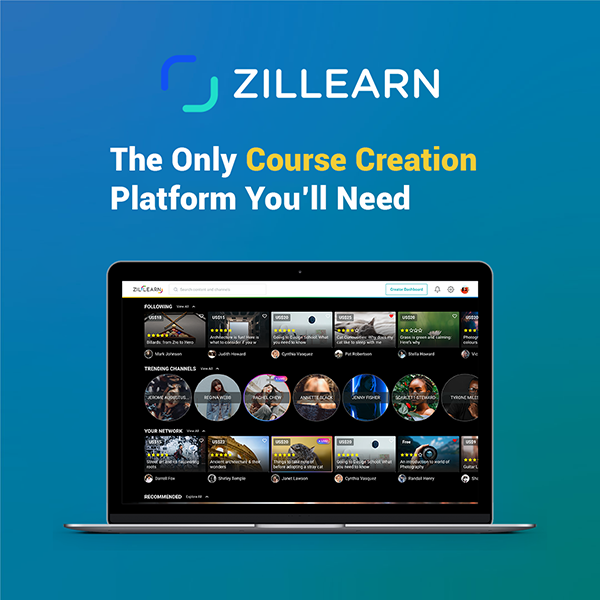With 55 color-coded squares representing the elements of core education sectors, HolonIQ, released its periodic table-like presentation of the global EdTech landscape.
Titled the 2021 Global Learning Landscape the project is a visualization by HolonIQ of possible future synthesis and relationship building between EdTech players.
The research presents taxonomy clusters such as Knowledge & Content, Education Management, New Delivery Models, Experiencing Learning, and Assessment & Verification. The data includes over 1,000 EdTech companies supporting learners, educators, parents, and corporations.
The global EdTech landscape report provides sortable digital resources for educators, entrepreneurs, and investors covering pre-K, K-12, higher education, skills, and vocational training. Educational resources and organizations working in EdTech in P2P, B2B, and B2B2C can also be sorted and visualized.
The project collects data from over 60,000 education organizations worldwide. It is an open-sourced taxonomy licensed under Creative Commons. It incorporates a feature for suggestions to be later curated and tracked for future updates of EdTech innovation ranging from early childhood to lifelong learning.
HolonIQ in late June released their list of Southeast Asia’s 50 most innovative education technology startups.
According to HolonIQ, artificial intelligence gathered the global EdTech landscape data, synthesizing it into knowledge. Volumes of text was processed, uncovering patterns, connections, and ideas from multiple languages. Video, audio, and other digital formats were used in the research, connecting it with geo-data points.
The potential for educational organizations, EdTech providers, and investors discovering partnerships through this data set and company presentation of the growing global EdTech and learning communities is encouraging.
HolonIQ says the project meets a demand for accessing, understanding, and learning from the education innovation that’s happening all over the world.
“One billion learners at three million schools, colleges and universities around the world are depending on education to prepare them for a prosperous life and the jobs of the future,” according to a statement co-signed by Parick Brothers and Maria Spies, Co-CEOs and Co-Founders of HolonIQ.
“However, the overwhelming majority of institutions are unable to innovate fast enough to deliver on this mission and, while education is estimated to become a $10 trillion USD market by 2030, it is highly fragmented and grossly under digitized, impeding transformation at a global scale.”

Machine learning and research from global experts analyzed data from over 60,000 educational organizations and 500,000 apps. Used were two approaches to data analysis — bottom-up powered by machine learning and top-down methodology driven by human expertise.
Here are some of HolonIQ’s EdTech taxonomy clusters in the 2021 Global Learning Landscape:
Upskilling
The 21st-century workforce will likely have many jobs and multiple careers throughout their adult lives. They will need to constantly update their knowledge and skills to stay relevant and meet job requirements that are always evolving.
Education organizations in the upskilling cluster fulfill this need with on-demand training in digital skills, safety, and compliance, including training in hobbies and creative arts such as music. Operating B2C, B2B2C, and B2B models, corporations are beginning to use these EdTech providers to manage their whole workforce — onboarding and training needs — and are drawn to the ability to add their brand’s content and easily monitor training progress.
Other EdTech organizations in this cluster are peer-based platforms that spotlight the community aspects of learning by encouraging participants to contribute and become trainers themselves.
Educational resources
This global EdTech cluster highlights teacher solutions for sourcing, storing, tagging, and using educational resources providing a repository of tools for use in their curriculum. Educational resources are increasingly becoming digital and able to be customized by teachers, allowing for contextualized solutions.
Peer to peer content sharing platforms for teachers has become popular with hundreds of thousands of teachers sharing and monetizing their proven lesson plans and worksheets.
Platforms aggregating open education resources give educators the ability to craft their own learning courses. Also found in this cluster are literacy and numeracy platforms, apps, and gamification tools.
Gamification
Games are a core instructional strategy in the Pre-K space. Elements of gamification are starting to appear at tertiary education levels and corporate training, with more complex game design elements being used in professional online training.
VR and mixed reality, once limited to high-cost operations such as flight simulators, are now becoming mainstream and HolonIQ sees many applications in medical, engineering, and other physical procedures but also increasingly common in “regular” curriculum as the benefits of “authentic” activities are more effective for learners.
STEAM and coding
A large domain of education innovation is STEAM and coding and this encompasses all learning sectors and age groups.
Asynchronous learning is focusing on boot camp-style offerings for upskilling in the area of coding. There are also app solutions for learning to code, which often include an online community, peer to peer instruction, and competitions.
Robotics and science kits are integrating both hardware and software in the maker space. Education in the arts is also seeing a comeback, with tech-enhanced creative and design skills, art, and online music education platforms.
XR
Extended Reality (XR) refers to virtual reality (VR), augmented reality (AR), and mixed reality (MR) and has the ability to meet engagement challenges in learning. XR also gives the opportunity for lower-cost training in critical situations such as defense, aerospace, and medical contexts.
XR startups in the EdTech space are deploying mobile solutions allowing use by multiple students in schools, experiential learning, lab learning, and trade school vocational training.
As the costs of immersive technology become more accessible schools are looking to invest in virtual experiences for their learners.
Corporations are also investing in Extended Reality for workforce training in industries such as sales and industrial production.
“This is a taxonomy to further unpack the broad definition of EdTech,” said Maria Spies at LEARNTech Asia Virtual Conference 2020 in June, as she referred to HolonIQ’s 2019 Global Learning Landscape. “It’s much broader than just learning environments or classroom technology these days.”




